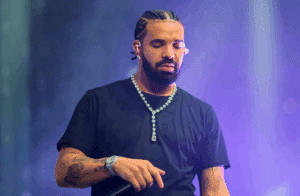In 2003, Disney released the 44th movie in its Animated Canon, Brother Bear. Set 10,000 years ago in northwest North America, the movie tells the story of Kenai, an indigenous teenager who gets turned into a bear after killing one in a misguided act of revenge over his brother’s death. Pairing up with a bear cub named Koda, Kenai seeks a way to become human again.
The movie was a mild box office success but received mixed reviews from critics and audience members. Many Disney fans also rank the movie low when reviewing the Disney Animated Canon. Does Brother Bear deserve its reputation as a mediocre animated movie, though?
Ever since I first saw the movie in theaters in 2003, I’ve loved its passionate story, compelling characters, and resonant themes of love, forgiveness, and understanding others’ perspectives. I think Brother Bear is a much better movie than most viewers give it credit for, and I’ll share my reasons why below.
A Story About Being a Brother and Looking Through Someone Else’s Eyes
When Brother Bear begins, Kenai is excited for his totem ceremony, a rite of passage where he’ll find out what his spirit animal is and become a man in his village’s eyes. Unluckily for him, at the ceremony Kenai receives the Bear of Love totem, which disappoints him since he doesn’t like bears or think love is manly. Later that day, Kenai and his brothers Sitka and Denahi discover that a bear has pilfered the fish they caught, so they pursue the bear. The bear defends herself and backs Kenai into a corner; seeing his brother in danger, Sitka sacrifices himself to save Kenai’s life.
After Sitka’s funeral, Kenai tells Denahi that he’s going to hunt the bear to avenge Sitka; when Denahi refuses to join him, Kenai storms off after the bear alone. Kenai corners the bear on a mountain and kills her, but he ends up getting more than he “beargained” for when the Great Spirits transform him into a bear as punishment. Stuck as a bear and unable to communicate with humans, Kenai reluctantly agrees to team up with a bear cub named Koda, who promises to show him the way to the mountain where the Northern Lights touch the earth if Kenai will accompany him to the bears’ annual salmon run.
Although he finds the cub annoying at first, Kenai eventually bonds with Koda and becomes his surrogate older brother, since Koda has no idea where his mother went. When he and Koda finally reach the salmon run and the bears accept Kenai as part of their festivities, Kenai rethinks his belief that bears are monsters, instead realizing that they have loved ones, friends, and families like humans do. His love for Koda and new respect for bears allow Kenai to become a man.
Brothers Who Bond, Fight, and Learn to Understand Each Other
Since Brother Bear focuses on the relationships between brothers, it’s worth looking at the three brothers who drive the story forward. Their relationships and character growth give the movie much of its charm and emotional power.
Unusually for a main character in a Disney movie, Kenai is both the movie’s protagonist and antagonist. He kicks the story off by trying to prove that he’s become a man, but he causes many of his own problems because he doesn’t believe that love has anything to do with being a man and because he kills a bear out of misguided anger. Throughout the movie, Kenai learns to overcome his distrust and suspicions towards bears and realizes just how powerful love for others, even bears, can be; these epiphanies allow him to grow dramatically as a person.
Koda starts out as an annoying kid character who talks too much, but his infectious enthusiasm eventually wins Kenai and the viewers over. Koda and Kenai’s bond grows so strong that they see each other as surrogate brothers. That strength makes it more heartbreaking when Kenai tells Koda about the bear he killed and Koda runs away, wanting nothing more to do with Kenai. It also makes Koda’s eventual decision to forgive Kenai and Kenai’s decision to protect Koda with his life more moving when they reunite.
As Kenai’s older brother, Denahi teases and fights with but also cares about his younger brother. After Sitka dies defending his brothers from the bear Kenai antagonized, Denahi refuses to blame the animal for Sitka’s death, but he follows Kenai to try to stop him or the bear from being killed. Unfortunately, he arrives too late to see that Kenai killed the bear and became a bear himself. Driven by the grief of losing two brothers to what he thinks is the same bear, he hunts Kenai just like how Kenai hunted the first bear. Denahi eventually realizes his mistake and lets Kenai decide which path in life he wants to follow.
Loving and Forgiving Those Different from You
Like in other Disney movies, Brother Bear shares the theme that love is a powerful force that can do amazing things; however, in this movie, romantic love is neither the solution to the protagonist’s problems nor his end goal. Instead, Kenai has to learn and express brotherly love, love for other species, even the bears he originally hated, and love for the environment to truly become the man he was meant to be.
The movie also focuses on viewing the world from someone else’s perspective. When he fights the bear he blames for Sitka’s death, Kenai sees bears only as aggressive monsters who antagonize humans for no reason. Only when he’s transformed into a bear and has to navigate the world like a bear does Kenai learn that bears just want to survive and protect their loved ones. The scene where Kenai relives his hunt from the bear’s point of view is especially effective in showing how his perspective changes due to his transformation.
Finally, Brother Bear tackles themes of forgiveness even in the most difficult circumstances. Kenai must learn to forgive the bear that he blamed for his brother’s death and his own transformation into a bear; Koda must learn to forgive Kenai for killing a bear he knew in a fit of rage; Denahi must learn to forgive his brother’s rashness and understand that Kenai has grown and can make his own choices wisely this time. The themes of brotherly love and forgiveness really make the movie a powerful watch.
What Have Film Critics and Disney Fans Thought About Brother Bear?
Released during a rough financial, critical, and internal period for Disney, Brother Bear earned $250 million worldwide on a $46 million budget, but it received mixed reviews from critics and audience members. The movie sits at a 37% critic’s score and 66% audience’s score on Rotten Tomatoes and a 3.6 out of 5-star overall audience score on Letterboxd.
Many critics on sites like Rotten Tomatoes called the movie formulaic, hackneyed, and not up to the standard of Disney Renaissance classics like Beauty and the Beast and The Lion King. Other critics felt that the movie wasn’t exactly breaking entirely new ground, but appreciated its striking use of animation, darker story beats, goofy humor, and themes of love, tolerance, and respect for the environment.
Audience reviews since the movie’s original release 21 years ago tend to be mixed but slightly more favorable than critics’ reviews. On Rotten Tomatoes and Letterboxd, viewers praised the movie’s animation, humor, emotional moments, and lessons about brotherhood and tolerance but criticized its writing and retreading of themes from Disney movies like The Lion King. They were split on Kenai’s likeability as a protagonist and the quality of Phil Collins’ musical score.
In many retrospective rankings of Disney’s animated movies, reviewers rank Brother Bear in the lower half or even near the bottom of their lists. They acknowledge that the movie is fun, has good animation, and imparts some good moral lessons, but also say the movie is tame and forgettable compared to many films released during the Disney Renaissance.
Why Do I Love Brother Bear So Much?
Brother Bear is my favorite Disney movie of all time. I love nearly everything about it. I’ve already discussed why I love its story, characters, and themes, but I also love its animation, music, and use of animal transformation as a storytelling device.
The animation is absolutely gorgeous, from the richly detailed backgrounds that show the beauty of northwest North America to the colorful, lively humans and animals that bring the movie to life. Kenai’s transformation into a bear is especially well-done: the Northern Lights that represent the Great Spirits pour down like a waterfall onto the mountain where Kenai slayed the bear. When Kenai touches them with his spear, they burst open to reveal waves of light filled with images of woolly mammoths and wolves. Finally, they lift him into the sky and an image of a bear’s head passes over his body, transforming him into a bear.
Written and performed by Phil Collins along with Tina Turner, the Bulgarian Women’s Choir, and the Blind Boys of Alabama, the music is amazing. The many memorable songs include the fun traveling tune “On My Way,” the heartbreaking lament “No Way Out,” and the heartwarming call for tolerance “Look Through My Eyes.” “Transformation,” which appropriately plays during Kenai’s transformation, is a standout. Sung in the Iñupiaq language by the Bulgarian Women’s Choir, the song describes why the Great Spirits are changing Kenai into a bear and enhances the scene’s beauty and wonder.
I love stories where a character is transformed into an animal to learn a lesson; Brother Bear is one of the best movies that features a human-to-animal transformation. The movie effectively shows how Kenai adapts to his new situation as a bear and how his perspective on himself and on bears changes as a consequence of his transformation and the new experiences he has.
Final Thoughts
Brother Bear was greeted somewhat unenthusiastically when it came out in theaters, with many audience members and reviewers liking its animation and themes but finding its characters, story, and music lacking. While opinions on the movie have improved among reviewers in the 21 years since its release, the movie is still seen as fairly middling by most Disney fans.
Brother Bear should have a much better reputation than it does now. Its heartfelt story and characters, beautiful animation, catchy music, and strong themes of brotherhood, forgiveness, and understanding others make it a great choice for your movie nights.
If you liked this article, check out these other great articles:
- Reacting to Disney’s Moana 2 Trailer: An Exciting New Adventure
- Exciting Toonami Rewind: Rewatch All Your Favorites Starting May 31st!
- 3 Reasons Why Studio Ghibli Films Are Popular Among Anime Fans, Even in 2024
For More Great Content
Total Apex is an all-encompassing content producer. We provide heavily detailed articles every day on entertainment, gaming, sports, and so much more! For more exemplary gaming and entertainment content, read our daily content on these sites: Total Apex Gaming and Total Apex Entertainment.









